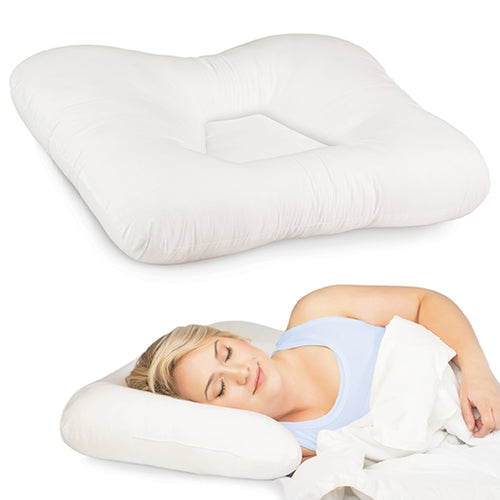

How Often Should You Replace Your Pillow?
By Brian Acton
Sleeping on a quality pillow that provides the right support and comfort can drastically improve the quality of your sleep. It can also help you avoid the neck and back pain that stems from sleeping on an inadequately supportive pillow.
While choosing the right pillow is important, you also need to know when to replace it. Over time, your pillow can lose its structural integrity, get dirty, and even cause neck and back stiffness. Here’s what you need to know about replacing your pillow.
Wash Your Pillow First
Before you replace your pillow, consider giving it a thorough wash. Not only will this keep your pillow clean, it can help extend its life expectancy. And since your face comes into direct contact with your pillow every night, you should keep it clean.
Your pillow is a magnet for dust mites, dead skin cells, body oil, and more. Over time, these materials can build up. One 2011 study found over one-third of a two-year-old pillow’s weight consists of bacteria, skin cells, and dead dust mites. Not only is the idea unsavory, but it can lead to acne breakouts or allergic reactions.
You should wash your pillowcases every few weeks and wash the pillows every few months. For tips on cleaning your pillows, check out our article on the subject.
Replace Your Pillow Every Few Years (or at Signs of Trouble)
There’s no hard rule on how often you should replace your pillow, and you can extend its life with regular maintenance and cleaning.
Memory foam pillows tend to have a longer lifespan and may last up to five years, while fiber pillows and other materials generally don’t last as long. While there are no hard numbers for your specific pillow, there are some signs that it’s time to find a replacement:
- Your pillow doesn’t bounce back: your memory foam pillow should bounce back into shape when you remove pressure. You should be able to fluff fiber and other materials back into their original shape. If your pillow can’t bounce back, it’s probably time to get a new one.
- You’re uncomfortable: if your pillow no longer provides the comfort it once did, it has probably lost its shape. If you have to toss and turn to get comfortable, you’re losing valuable sleep and should find a replacement.
- You’re experiencing neck and back pain: when your pillow no longer maintains proper support, you may start waking up with neck, back, or shoulder soreness or stiffness.
- They’re falling apart: it may seem obvious, but pillows that are frayed at the edges, falling apart, or losing their stuffing should be replaced.
In Closing
Many people may not buy new pillows as often as they should. But if your pillow feels flat and unsupportive, it’s probably time for a replacement. Choose a new pillow that provides the right level of comfort and support, and don’t forget to clean and maintain it to extend its lifetime.
Sources:
https://www.coreproducts.com/blog/2017/05/11/dont-neglect-your-pillows-for-a-deep-spring-cleaning/
http://www.foxnews.com/health/2011/06/22/uk-study-finds-pillows-breeding-ground-for-superbugs.html
https://www.huffingtonpost.com/2015/07/31/pillowcase-acne-beauty-myth_n_4372709.html
https://sleep.org/articles/replace-pillow/
Mentioned Products



